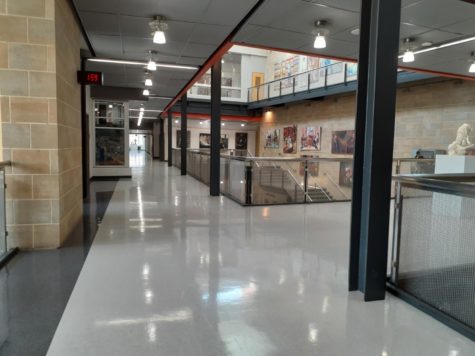Capybara Class War
November 3, 2021

Carpinchos, also known as capybaras, are dog-sized rodents known for their docile nature. On the internet, you may see them cuddling affectionately with dogs and cats, or maybe chomping gleefully on a chunk of bright, succulent watermelon. You’d doubt me if I told you that these coconut dogs have a rebellious side. One that is praised by many, especially the working class of Argentina.
Capybaras are a cultural symbol of Argentina, but they are also a symbol of class struggle. Argentina is a country notoriously known for its backlash by the working class and environmentalists for establishing luxury developments on wetlands, which act as the natural environment of many animals. Nordelta, a recently-built gated community, is a prime example when it comes to showing the repercussions of committing this controversial practice.
Prior to its conversion into a wealthy, gated community filled with houses, schools, and an artificial river inhabited by aquatic ducks, Nordelta was an environment where capybaras thrived, as well as additional wildlife. The investors who funded the development of Nordelta loved the idea of being surrounded by nature. However, majority of the environment was deemed hostile and undesirable as development went on. As they encroached upon a wetland near the Parana River, their impact on the ecosystem progressively became more and more catastrophic. Populations of wildlife severely decreased. Some species, such as the fox, jaguar, and ocelot, suffered from extirpation, causing them to be virtually extinct in Argentina. Nordelta caused the capybara population to plummet drastically due to environmental degradation and disturbance caused by construction. However, as decades passed without any natural predators present in their environment, the capybara population exponentially grew in size and continues to rise to this day.
At first, capybaras were viewed as unproblematic creatures and most did not feel disrupted by their presence. Although they roamed around Nordelta, sightings of them were more uncommon. However, as the population grew, more and more rebellious rodents munched and pooped on the lawns of the rich. They have been reported to inadvertently cause traffic jams, as well as exhibit aggressive behavior such as biting people’s pets when provoked. These adorable anarchists have caused many residents to become furious. People have publicly threatened to shoot them out of anger. But since they are protected by Argentinian law, not many have gone out of their way to kill them. Instead, people have resorted to establishing capybara deterrents, such as fences. A population of 400 may seem small, but in the gated community, the number of them is enough for people to view them as terrorizing and invasive pests. At the rate the population is increasing, it is estimated that at its peak there will be up to 3,000 capybaras roaming around Nordelta.
Majority of the residents of Nordelta are anti-capybara. Many of them think that the population should be controlled and dealt with. However, many environmentalists are pro-capybara and argue that the wealthy citizens should adjust to coexistence with capybaras after claiming the land they used to thrive off of. The working-class of Argentina praise and applaud the capybaras for inhabiting Nordelta. To them, they are the political heroes of the left.
Populations from both respective groups suffered due to the construction of Nordelta. The infrastructure of Nordelta was deliberately made to separate the working class from the rich. Outside of the gated community are neighborhoods full of the working-class. Despite the repercussions of establishing Nordelta, the majority of the consequences have been brought into various neighborhoods. In Las Tunas, Buenos Aires, a working-class neighborhood, floods constantly occur due to a lack of natural drainage. The wetland Nordelta was built to provide space for rain to travel without any consequences for the environment. Unfortunately, this source of drainage has been blocked off, causing dangerous amounts of rainwater to accumulate in local neighborhoods.
For decades, many individuals of the working-class protested against the Argentinian government, but their voices often went unheard. So, when the capybara population began to evoke complaints by the rich, the working class cheered them on. That is why they are currently a symbol of the working-class. They represent their frustrations towards the rich and the gated community.
Capybaras are cute, cuddly, and fight for their rights, as well as the rights of others. When the rich wrecked their home and population, they managed to survive and prosper. When they claimed their land and reserved it only to themselves, the capybaras still inhabited Nordelta.
Despite the threats targeted towards them, they still attempt to reclaim their home. These herbivore animals may not be eating the rich, but they are taking action against them.





